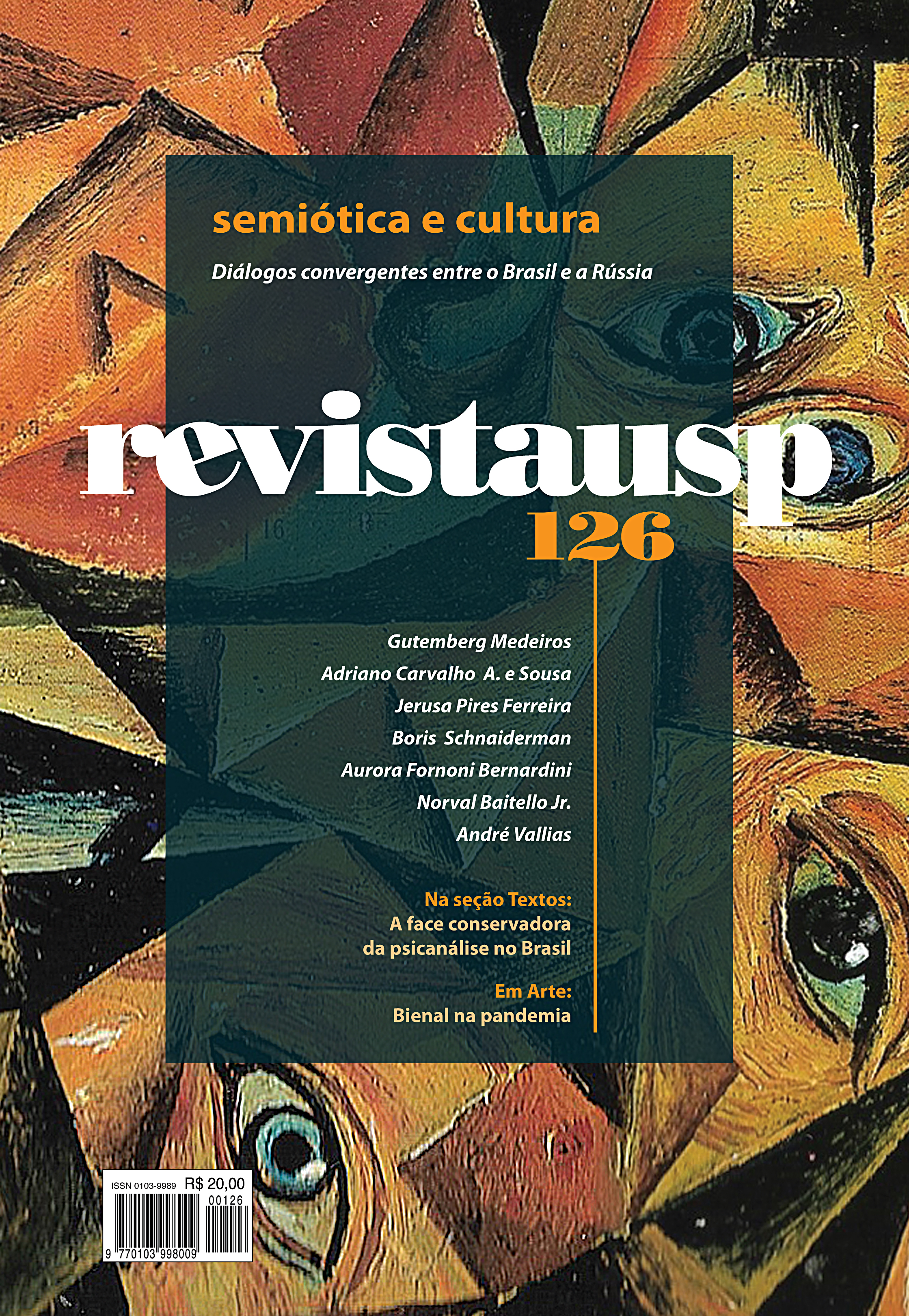Peter Schlemihl: pacto fáustico em séries culturais
DOI:
https://doi.org/10.11606/issn.2316-9036.i126p59-70Keywords:
Jerusa Pires Ferreira, Cultural translation, Fausto, Schlemihl, Animation, Literary archetypeAbstract
From the short story The wonderful story of Peter Schlemihl, by Adelbert von Chamisso, the author analyzes the animation L’Homme sans ombre, by Georges Schwizgebel, and its translation process from one language to another. The loss of shadow appears as an archetypal image of the Faustian pact, which leads the animator to problematize colors in dialogue with the painting.
Downloads
References
CAMPOS, Haroldo de. Metalinguagem e outras metas. 4ª ed. São Paulo, Perspectiva, 1992.
CHAMISSO, Adelbert von. A história maravilhosa de Peter Schlemihl. 2ª ed. Posfácio de
Thomas Mann. Trad. Marcus Mazzari. São Paulo, Estação Liberdade, 2003.
CHAMISSO, Adelbert von. L’Étrange histoire de Peter Schlemihl. Paris, Folio, 1992.
CHOLODENKO, Alan. “A animação do cinema”. Galáxia, n. 34, jan.-abr./2017.
FRENZEL, Elizabeth. Diccionario de argumentos de literatura. Madrid, Gredos, 1976.
GAUDREAULT, André. “O cinema dito dos primeiros tempos”. Galáxia, n. 37, jan.-abr./2018.
GAUDREAULT, André; MARION, Philippe. La fin du cinéma? Un média en crise à l’ère du
numérique. Paris, Armand Colin, 2013.
JUNG, Carl Gustav. Os arquétipos e o inconsciente coletivo. 7ª ed. Petrópolis, Vozes, 2011.
MANOVICH, L. The language of new media, Cambridge, The MIT Press, 2001-2002.
MARTINEZ OLMEDILLA, A. El despertar de Fausto. Madrid, Prensa Moderna, 1932.
MARX, Karl. O 18 de brumário de Luís Bonaparte. São Paulo, Boitempo, 2011.
MELETÍNSKI, Eleazar. Arquétipos literários. Trad. Aurora Fornoni Bernardini, Homero Freitas
de Andrade e Arlete Cavaliere. 2ª ed. Cotia, Ateliê, 2002.
MONTERO, Reinaldo. Fausto. La Habana, Editorial Letras Cubanas, 2003.
MORAN, Patricia; PATROCINIO, Janaina (orgs.). Machinima. São Paulo, Pró-Reitoria de
Cultura e Extensão Universitária da USP, 2011.
PINHEIRO, Amálio. “Jerusa: a senhora barroca”. Galáxia, n. 42, set.-dez./2019.
PIRES FERREIRA, Jerusa. Fausto no horizonte. São Paulo, Hucitec/Educ, 1996.
PIRES FERREIRA, Jerusa. “Fausto no horizonte latino-americano”, in Helmut Galle; Marcus
Mazzari (orgs.). Fausto e a América Latina. São Paulo, Humanitas/Fapesp, 2010.
PIRES FERREIRA, Jerusa. “O Judeu Errante: a materialidade da lenda”. Olhar, a. 2, n. 3,
jun./2000.
SERRES, Michel. “Bienvenu à l’homme nouveau”. Le Point, 14/juin/2012. Disponível
em: https://www.lepoint.fr/debats/michel-serres-bienvenue-a-l-hommenouveau-
-06-2012-1474761_2.php. Acesso em: 2/3/2020.
SOUSA, Adriano C. A. e. “Belair, música da luz”, in Isis Rost; Patricia Marcondes de Barros
(orgs.). Transas da contracultura brasileira. São Luís, Passagens, 2020. Disponível em:
https://bit.ly/39E30M7. Acesso em: 29/7/2020.
Filmografia
L’Homme qui a perdu son ombre, Théâtre de la Jeunesse, 1966.
O estudante de Praga, Galeen, 1926.
L’Homme sans ombre, Georges Schwizgebel, 2004.
Downloads
Published
Issue
Section
License
Copyright (c) 2020 Revista USP

This work is licensed under a Creative Commons Attribution-NonCommercial-ShareAlike 4.0 International License.
|
Pertence à revista. Uma vez publicado o artigo, os direitos passam a ser da revista, sendo proibida a reprodução e a inclusão de trechos sem a permissão do editor. |


